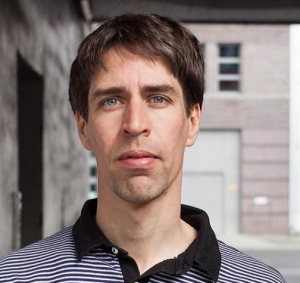Slavery Routes: 4 part Documentary Series (4×52′)
Finishes: 26 October 2018Time: 9:00 PM
Venue: Russell Square: College Buildings
Type of Event: Film Screening
Dir. by Daniel Cattier, Juan Gélas, Fanny Glissant
Producers: Compagnie des Phares et Balises, ARTE France, Kwassa Films, RTBF, LX Filmes, RTP, Inrap
This is the story of a world whose territories and own frontiers were built by the slave trade. A world where violence, subjugation and profit imposed their routes. The history of slavery did not begin in the cotton fields. It is a much older tragedy, that has been going on since the dawn of humanity. From the VIIth century on, and for over 1,200 years, Africa was the epicenter of a gigantic traffic of human beings traversing the entire globe. Nubian, Fulani, Mandinka, Songhai, Susu, Akan, Yoruba, Igbo, Kongo, Yao, Somali… Over 20 million Africans were deported, sold and enslaved. This criminal system thrived, laying the foundations of empires around the world. Its scale was such that for a long time, it has been impossible to relate it comprehensively. And yet, it raises a fundamental question: how did Africa end up at the heart of the slavery routes?
Series convened by Dr Marie Rodet (SOAS Department of History, School of History, Religions & Philosophies) and Dr Shihan de Silva (Institute of Commonwealth Studies)
Programme
Monday 08 October 2018 at SOAS University of London, Khalili Lecture Theatre at 7pm-9pm
In presence of the filmmaker Juan Angelas, followed by a Q&A
Part 1: 476 – 1375: Beyond the desert
In 476 AD, Rome fell under the pressure of barbarian invasions. On the ruins of the Roman Empire, the Arabs founded an immense empire that stretched from the banks of the Indus to the South of the Sahara. Between Africa and the Middle East, a huge slave trade network was forged, that would last for centuries. At the heart of this continental network, two major merchant cities stood out. In the North, at the crossroads of the Arabian Peninsula and Africa, Cairo, the most important Muslim city and the main commercial hub of Africa. In the South, Timbuktu, the stronghold of the great West African empires, and point of departure of the trans-Saharan caravans. In this epic and documented story, the first episode of Slavery Routes tells 700 years of history and reveals how the sub-Saharan populations have become, over centuries, the main “raw material” of the greatest deportation in history.
________________________________
Monday 15 October 2018 at SOAS University of London, Khalili Lecture Theatre at 7pm-9pm
Q&A with Dr Vincent Hiribarren (Kings College)
Part 2: 1375 – 1620: For all the gold of the world
At the end of the Middle Ages, Europe opened up to the world and discovered that it was at the margins of the main area wealth generation on the planet: Africa. The Portuguese Conquistadores were the first to set out to conquer Africa. They went to get gold, and came back with hundreds of thousands of captives to sell in Europe. Between the African coasts, Brazil and their trading posts, the Portuguese set up the first colonies entirely populated by slaves. Off the coast of Gabon, the island of São Tomé became the testing ground for the most profitable exploitation system ever to exist: the sugar plantation…
________________________________
Wednesday 24 October 2018 at SOAS University of London, Khalili Lecture Theatre at 7pm-9pm
Q&A with Prof Catherine Coquery-Vidrovitch (University Paris – Diderot)
Part 3: 1620 – 1789: From sugar to rebellion
XVIIth century. The Atlantic has become the battlefield of the sugar war. French, English, Dutch and Spaniards fought for the Caribbean to cultivate sugar cane. To satisfy their dreams of fortune, the European Kingdoms opened new slavery routes between Africa and the islands of the New World. With the complicity of banks and insurance companies, they industrialized their methods and brought the number of deportations to unprecedented levels. Trapped, nearly 7 million African were caught up in a gigantic hurricane of violence.
________________________________
Friday 26 October 2018 at SOAS University of London, Khalili Lecture Theatre at 7pm-9pm
Q&A with Dr Klara Boyer-Rossol (EPHE Paris)
Part 4: From 1789 to 1888: The new frontiers of slavery
In London, Paris and Washington, the abolitionist movement was gathering momentum. After the slave rebellion in Santo Domingo, and facing the public opinion’s growing outrage, the major European powers abolished the trans-Atlantic trade in 1807. Yet Europe, in the midst of the industrial revolution, could not do without the slave workforce. To satisfy its needs in raw materials, it pushed further the frontiers of slavery and turned a blind eye on the new forms of human exploitation in Brazil, the United States and Africa. At a time when legal trade was finally prohibited, the deportation of African captives would explode, and become more important than ever. Within 50 years, nearly 2.5 million were deported.
Registration
To register please email: cas@soas.ac.uk
Organisers: SOAS School of History, Philosophies and Religions, SOAS Centre of African Studies and Institute of Commonwealth Studies
Contact email: cas@soas.ac.uk



